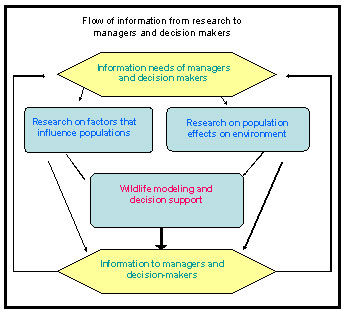Northern Rocky Mountain Science Center (NOROCK)
Home | About Us | Science | Product Library | News & Events | Staff | Students | Partners | Contact Us
Northern Rocky Mountain Science Center (NOROCK)
Home | About Us | Science | Product Library | News & Events | Staff | Students | Partners | Contact Us
The Conservation of Amphibians, Fish, and Wildlife of the Northern Rocky MountainsThe Northern Rockies are blessed with an abundance of plant and animal species which have remained relatively intact since the Lewis and Clark expedition in the early 19th century. Large, charismatic species such as wolves and grizzly bears still inhabit many areas and free roaming ungulates are still very much part of the landscape. Native amphibians, fish and reptiles are still present in their historic ranges for the most part, but challenges to the conservation of these species are numerous. Energy development, increasing human population pressures, and the continued demand for more water make the management of wildlife more complicated than ever. Scientists at NOROCK work with partners to study key life history and habitat needs of these species. We develop analytic tools that help managers with decision support to evaluate the tradeoffs of various management options. Our current program includes research in the following areas: |
The Changing Landscape of the Northern Rocky MountainsUnprecedented population growth, the re-emergence of the energy industry, and the increasing demand for water and natural resources is changing the landscape of the Rockies. Couple that with global climate change, and managers face unprecedented challenges in the management of natural resources. Center scientists are working on research projects that will provide managers with information related to the effects of climate change on glaciers and ecosystems, the consequences of flow regulation on aquatic and riparian resources, and the influence of geology and hydrology on the dynamics of wetland ecosystems. We study the effects of invasive species on terrestrial and aquatic systems, and track the effects of large-scale energy development on the sagebrush ecosystems of the northern Rockies. The changing dynamics of wildfire in the northern Rockies are also a concern of natural resource managers. Center scientists are working on a variety of research projects to provide science for resource managers on these issues: |
Wildlife species assessments synthesize data from many sources that may use different methods, have
different data, and often encompass multiple time periods. Tools are needed to integrate  multiple-species and habitat information to determine the ecological effects of land management on both public and private lands. The increasing pressure of land development on private lands, expanding energy production, and continued commodity extraction on world class wildlife resources requires more complicated analyses to identify potential consequences and trade-offs of management alternatives. We need to develop systems-based ecological models for key regions of the northern Rockies, conduct simulation experiments using the models and develop decision support tools for managers to identify potential tradeoffs from management alternatives. This modeling will identify multi-scale information on ecological responses to management and identify ways to optimize the choice and spatial arrangement of management to improve ecosystem services. While statistical models assist with determining population trends in distribution and abundance, helping to determine the potential for disease spread and transmission, and forecasting long-term patterns for ungulate species, decision support systems are relatively new techniques to use information from research studies to develop models that reflect a particular ecosystem or species of interest. Model inputs can be adjusted to fit management goals or environmental conditions to display the effects on the system so that managers can weigh tradeoffs of different management options.
multiple-species and habitat information to determine the ecological effects of land management on both public and private lands. The increasing pressure of land development on private lands, expanding energy production, and continued commodity extraction on world class wildlife resources requires more complicated analyses to identify potential consequences and trade-offs of management alternatives. We need to develop systems-based ecological models for key regions of the northern Rockies, conduct simulation experiments using the models and develop decision support tools for managers to identify potential tradeoffs from management alternatives. This modeling will identify multi-scale information on ecological responses to management and identify ways to optimize the choice and spatial arrangement of management to improve ecosystem services. While statistical models assist with determining population trends in distribution and abundance, helping to determine the potential for disease spread and transmission, and forecasting long-term patterns for ungulate species, decision support systems are relatively new techniques to use information from research studies to develop models that reflect a particular ecosystem or species of interest. Model inputs can be adjusted to fit management goals or environmental conditions to display the effects on the system so that managers can weigh tradeoffs of different management options.
Scientific emphasis areas:
The regional node of the National Biological Information Infrastructure (NBII) develops natural sciences learning tools, and supports a large database of biological information on many species and issues throughout the Mountain Prairie information area, and develops decision support tools for a variety of projects including trumpeter swan research at NOROCK. On the web at: http://mpin.nbii.gov.